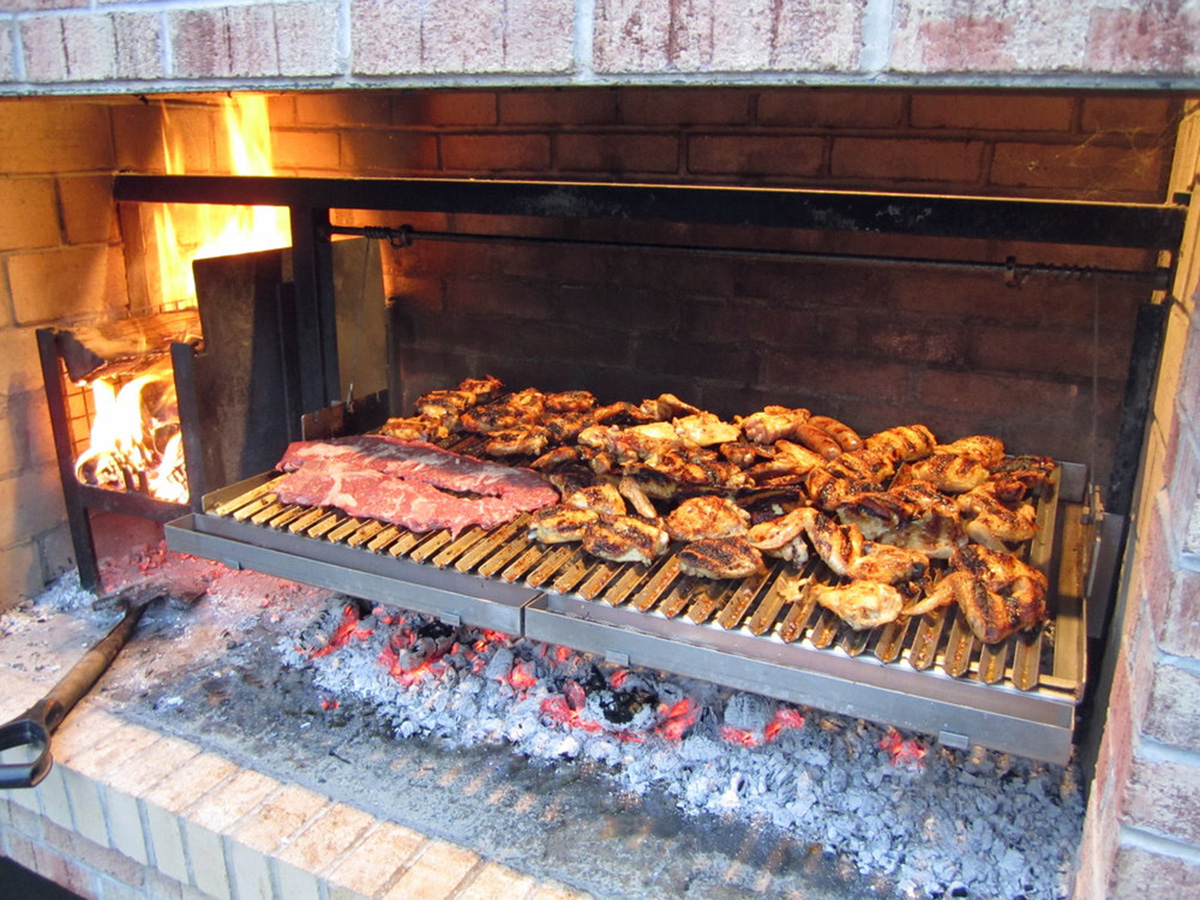
Argentinian Style BBQ
If where there’s smoke there’s fire, then in Argentina, where there’s fire, there’s an ‘Asado’. An ‘Asado’ in Argentinia isn’t just a barbecue, or a cultural tradition, it’s a main source of national pride.
Before we get into it, let’s just run through a little vocabulary. Asado means the ‘BBQ event’ but also it is a cut of meat (short and spare ribs). The Asador refers to the “grill master,” who is also known as the “parrillero” and al asador or asador criollo is a sub-style of barbecuing vertically on an iron cross over an open flame. The Parrilla (pronounced pa-ree-sha) is the grill or the cooking device. So, with that covered, let me explain a little about this world famous cuisine.
The Parrilla: The parrilla is the grandmaster of all grilling devices, an extraordinary tool that captures the primal essence of cooking meat with just salt and fire. Parrillas in Argentina come in all shapes and sizes, but the most common two-part design consists of a main grill with a brasero (firebox) on the side. The brasero is loaded with firewood and/or charcoal. Once the fire is ablaze and glowing embers fall to the bottom, the hot coals are transferred and spread out under the main grilling area. Above, the grate grooves form a V-shape, and tilt on a slight decline guiding the excess juices to an attached trough, which causes any unwanted grease to drip downward, preventing flare-ups. Many parrillas are equipped with a crank and chains that adjust the height, essential for properly regulating temperature.
The meat that is cooked on the Parrilla is rarely marinated, just sprinkled with coarse salt either right before, or once it hits the grill. When larger pieces of meat are prepared a la cruz, standing up on an iron cross, they are often doused in a salmuera, a brine of hot water, coarse salt, and herbs.
When each cut of meat reaches the optimal level of doneness, it is carved and distributed as ready. It’s not uncommon for the grill master to simply serve the cuts on a communal wooden board, so each eater can grab what they want with their fingers or forks. Of course this is not common practice in a restaurant, but at a family gathering it is the only way to eat. What is very common though in Argentinian restaurants is the Parrillada. This mixed-grill platter encompasses a little bit of everything that the parrillero is cooking. You would need a very healthy appetite to finish one of these on your own, so it maybe best if it is ordered as a dish to share and is placed on the ecentre of the table, much the same way that it would be done in the towns and villages of Argentina. It is a great way to sample the many meats on offer and the various cuts of meat.
The Agentinians are well known for their meat eating prfeferences and it is a well used joke in Argentina that if you want vegetables with your meat, then you had better bring your own. Of course a jacket potatoe is always on hand and interestingly, would often be wrapped in tin foil and chucked into the burning coals to cook.
A final word about Chimichurri sauce. It’s a common misconception that Argentines smother everything with chimichurri sauce. When you order a steak in Buenos Aires, the waiter will bring you a plate of naked steak, it doesn’t hide behind a sauce or condiments. That said, chimichurri is generally placed on the table for moderate communal use and bread sopping. There’s no one way to make chimichurri so the taste will differ greatly but, when you find one you like, there is nothing better to accompany your tasty, freshly grilled steak.